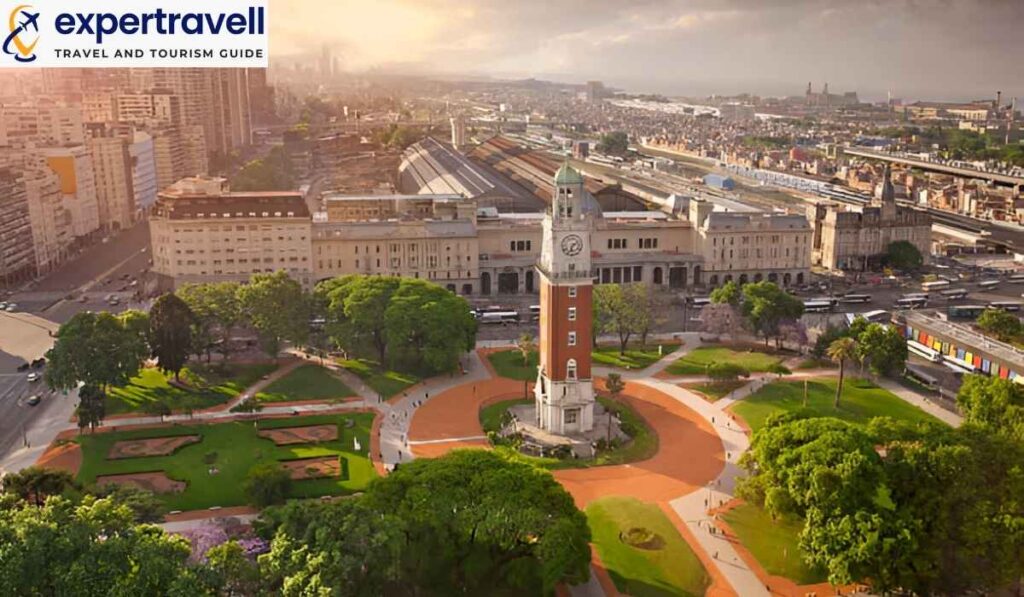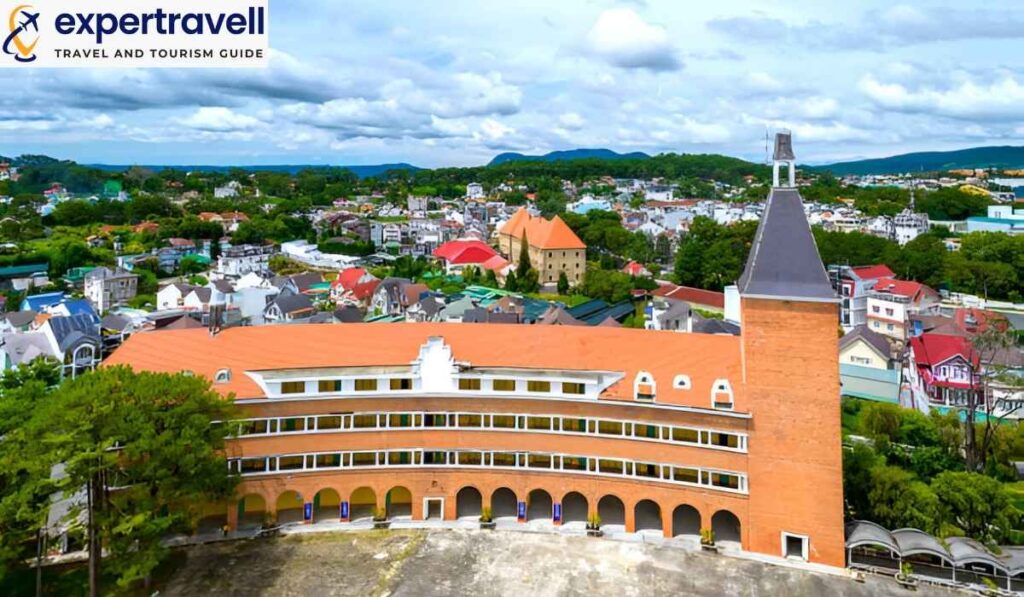Buenos Aires, the vibrant capital of Argentina, is a city brimming with hidden treasures waiting to be discovered. Beyond the well-known tourist attractions, this metropolis offers a wealth of unique experiences for those willing to venture off the beaten path. From secret gardens to mysterious bars, Buenos Aires reveals its true character through these lesser-known gems.
Exploring these hidden wonders allows visitors to engage with the authentic identity of Buenos Aires. Each neighborhood holds its captivating secrets, showcasing the city’s rich cultural tapestry and urban artistry. By delving into these tucked-away corners, travelers can uncover the impressive social rituals and local community life that define the true spirit of this enchanting South American destination.
Hidden Treasures in Buenos Aires City Centre
1. The Tiny House Atop a Skyscraper
El Chalecito is a unique attraction in Buenos Aires. This small house sits on top of a tall building on Avenida 9 de Julio. It gives visitors a great view of the city’s famous street and the Obelisk.
The house was built in 1926 by Rafael Diaz, who owned a furniture store. He wanted a place for his family to eat and rest during the day. In 2014, it became a protected city landmark. The public can now visit, but tours are limited.
Even if you can’t go inside, try to spot this unusual sight while exploring Avenida 9 de Julio. It’s a fun challenge and a true hidden gem in the city.

2. Lunch at a Secret Monastery
The San Ramon Nonato Monastery is a special place in Buenos Aires. It’s close to the famous May Square and Pink House, but easy to miss if you’re not looking for it.
This monastery dates back to 1603. It has a small chapel and a beautiful garden. Today, it’s a peaceful spot for office workers to have lunch.
Inside the old buildings, you’ll find antique stores, restaurants, and small cafes. These businesses make good use of the pretty garden. It’s a great place to take a break from the busy city.
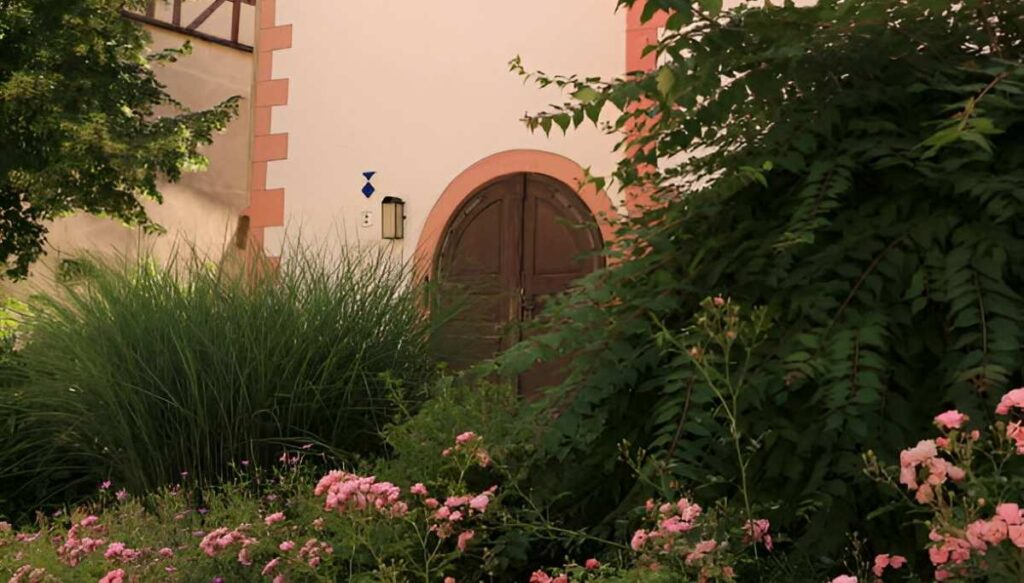
3. A Spanish-Inspired Palace with a Secret Garden
The Noel Palace is a big mansion with a beautiful Andalusian garden. It’s in the Retiro area, near downtown Buenos Aires. The building is hidden behind a white wall with a small wooden door.
This mansion was built in the 1920s by an architect named Martin Noel. Since 1943, it has been home to a Hispanic Art Museum. The museum is small but has interesting items from Argentina’s colonial period up to its independence.
There’s a small fee to enter the Noel Palace. It’s open most days of the week but closed on Tuesdays. Check their website for current hours before you visit.
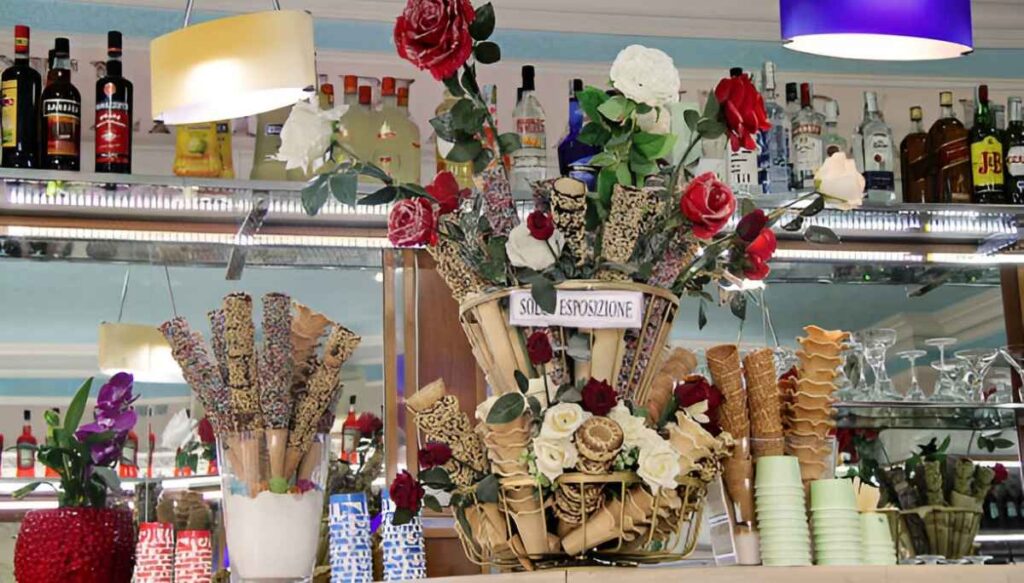
4. The Hidden Bar in a Flower Shop
Floreria Atlantico is a unique bar in Buenos Aires. It’s hidden inside a flower shop in the downtown area, close to Plaza San Martin.
To find the bar, go into the flower shop and ask for Florería Atlantico. The cashier will point you to a metal door that looks like a fridge. Behind this door, stairs lead down to a basement where the bar is.
This hidden bar is open every day from 4 pm to 2 am. It’s a fun secret spot to visit in the city.
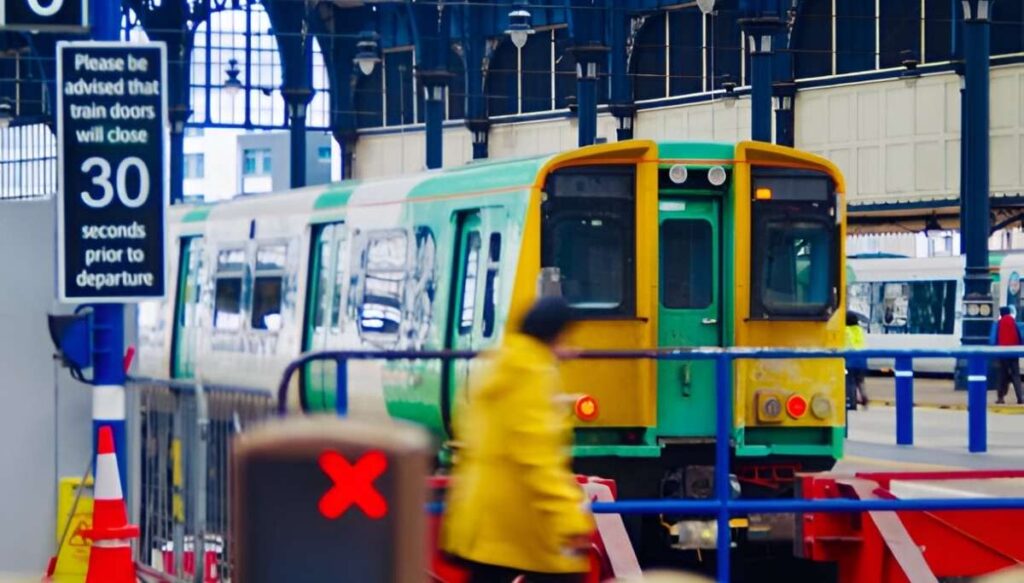
5. Discover Buenos Aires’ Tango Subway
The yellow H-line of the Buenos Aires subway has a special surprise. Each station on this line has murals of famous tango stars. These artworks honor the people who made tango famous in the 1920s and 1930s.
The H-line is the newest subway line in Buenos Aires. When it was built in 2003, the city government decided to make it a “cultural tango tour.” Many people don’t notice all the tango references in these stations.
One of the best murals is at Corrientes station. Here, you can see a big painting of Carlos Gardel and Enrique Santos Discépolo. This artwork uses a local style called filete porteño, which you can see all over Buenos Aires.
Sometimes, you might even see people dancing tango before the murals. Taking a ride on the H-line is a great way to learn about Buenos Aires’ tango history while using public transport.
Hidden Places in San Telmo, Buenos Aires
6. Step Inside Buenos Aires’ Slimmest Abode
In the heart of San Telmo, a unique architectural marvel awaits curious visitors. Known as the narrowest house in Buenos Aires, this slim structure measures a mere 8.2 feet (2.5 meters) wide. Built-in 1580, this tiny dwelling was once part of a larger complex.
The house’s history is as intriguing as its dimensions. During the Yellow Fever outbreak of 1871, its owners fled, and the building became a tenement. This event led to its separation from the larger structure, creating the slim residence we see today.
Located on Pasaje San Lorenzo, this skinny home is now part of a larger historical site. Visitors can explore its compact interior during daily guided tours at 1 PM. These tours also include access to secret tunnels and a museum.
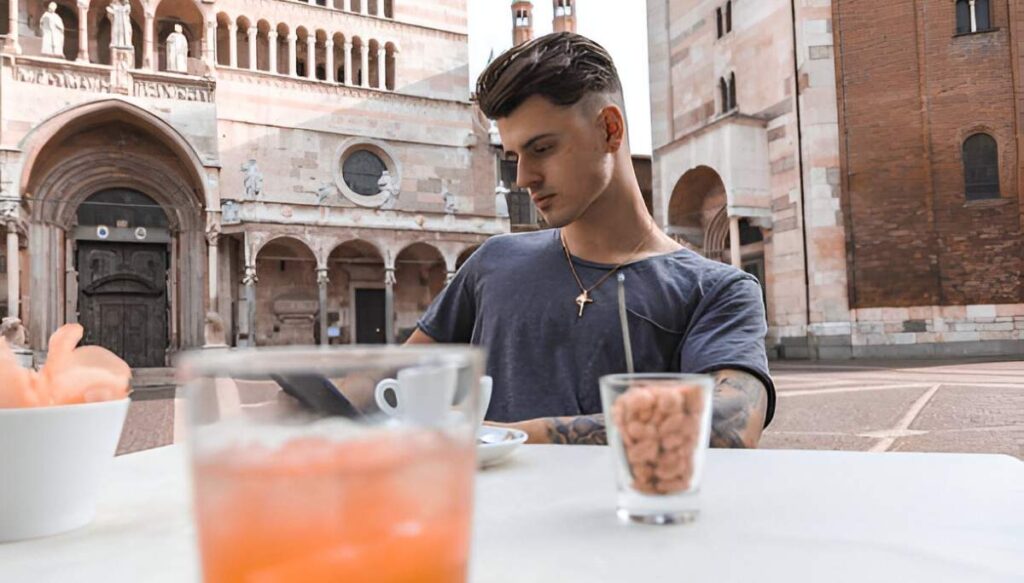
7. Sip Drinks in a Former Jesuit Retreat
Hidden within San Telmo’s bustling streets lies a bar with a fascinating past. Housed in a former Jesuit convent, this drinking spot offers a unique blend of history and modern leisure.
Guests enter through a small passageway, leading to a Spanish-style house. The real treat awaits at the back, where stairs guide visitors to a stunning multi-level patio. This outdoor area feels like a secret garden, with lush plants covering walls and balconies.
The bar’s owners have preserved many original features of the convent, creating a one-of-a-kind atmosphere. It’s a perfect spot for those seeking a drink in a truly distinctive setting.
Both these hidden gems offer a glimpse into San Telmo’s rich past. They stand out among the neighbourhood’s other attractions, which include:
- Cobblestone streets lined with colonial houses
- Antique stores filled with unique treasures
- The bustling San Telmo Market
- Street tango performances at Plaza Dorrego
- Professional tango shows at venues like El Viejo Almacén
For history buffs and curious travelers alike, these lesser-known spots provide a deeper look into Buenos Aires’ oldest neighborhood. They offer a break from the usual tourist trail and a chance to experience the city’s hidden charms.
Unique Discoveries in Palermo, Buenos Aires
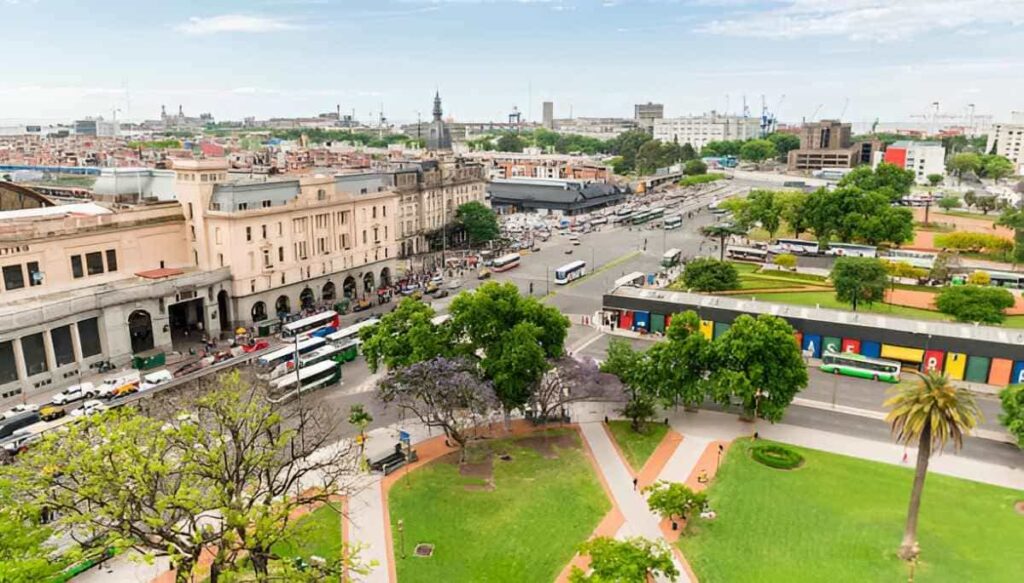
8. Visit the Ricardo Rojas House and Garden
The Ricardo Rojas House Museum is a hidden treasure in Palermo. This stunning property features a secret Spanish-inspired garden that blends colonial, Muslim, and Roman architectural elements. Ricardo Rojas, an influential Argentine writer and politician, lived here in the 19th century.
The museum showcases Rojas’ extensive book collection and hosts cultural events. Visitors can explore the house and garden for free from Tuesday to Saturday, 11 am to 7 pm.
Location: Charcas 2837, Palermo

9. Master the Art of Argentine Barbecue
Experience the heart of Argentine culture by learning to make a traditional asado (barbecue). This unique food tour in Palermo Viejo teaches visitors the intricate process of preparing an authentic Argentine barbecue.
Participants learn about:
- Selecting the best ingredients
- Starting the fire correctly
- Making chimichurri sauce
This immersive experience offers a deeper understanding of Argentine cuisine and traditions.

10. Discover the Ritual of Yerba Mate
Yerba Mate is more than just a caffeinated beverage—it’s a cultural institution in Argentina. This herbal drink has deep roots in gaucho (cowboy) culture and is an essential part of social gatherings.
A mate workshop teaches visitors:
- The history and significance of mate
- Proper preparation techniques
- Etiquette for sharing mate
This hands-on experience allows tourists to fully appreciate this important Argentine tradition.
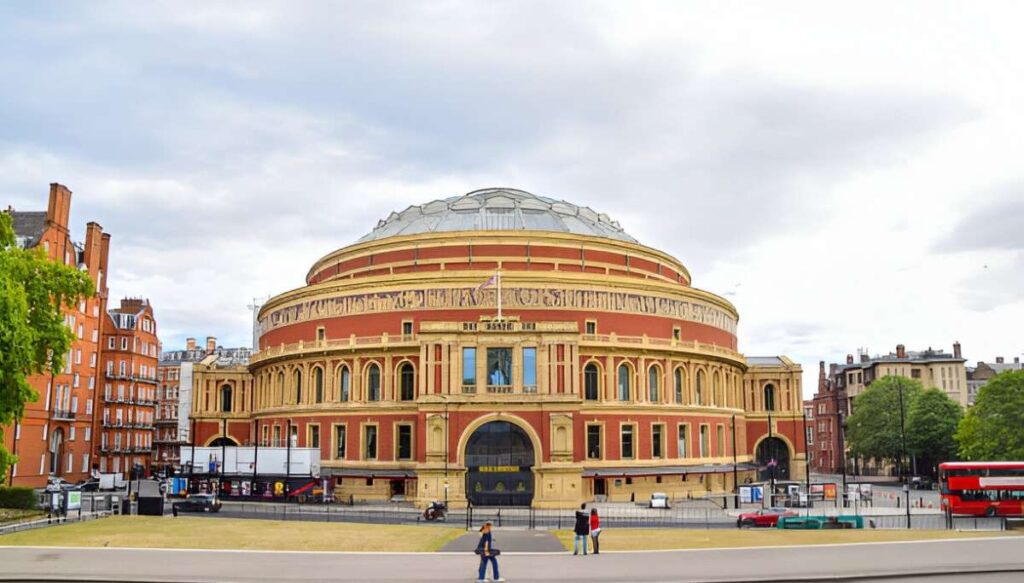
11. Explore the Round House
The Round House, or Casa Redonda, is an architectural gem in Palermo. Built in 1922 by Italian architect Mario Palanti, it shares design elements with the famous Barolo Palace.
Key features:
- Art Nouveau style
- Circular design
- Located in the exclusive Barrio Parque neighborhood
While the interior is not open to the public, the exterior is worth admiring for its unique architecture.
Location: Eduardo Costa 3079, Palermo

12. Enjoy Coffee at a Historic Cafe
Buenos Aires has many famous cafes. One stands out – a cafe on Avenue de Mayo that opened in 1858. It’s a great spot to sip coffee and watch people go by. Many celebrity famous people have visited over the decades. The cafe can get busy, but it’s worth a visit on a rainy day. You might even drink from the same cup as a famous person!
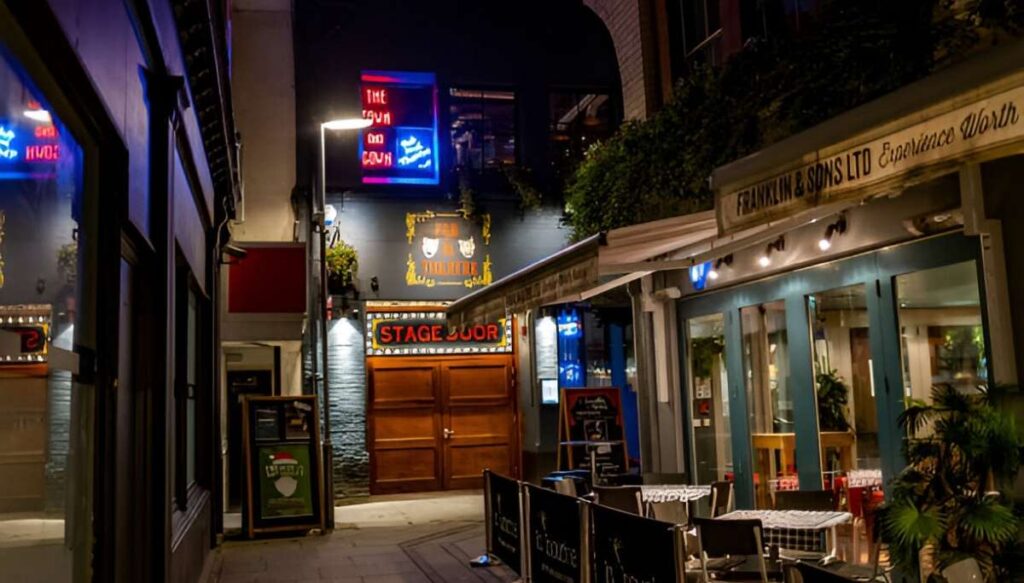
13. Enjoy Drinks in a Hidden Subway Bar
Uptown Bar offers a one-of-a-kind drinking experience in Palermo. The entrance mimics a New York City subway station, complete with:
- A tunnel with authentic-looking subway signs
- Ticket control
- A replica subway car
Once inside, visitors can enjoy classic cocktails and creative house specialties in this unique setting.
Location: Arevalo 2030, Palermo Hollywood
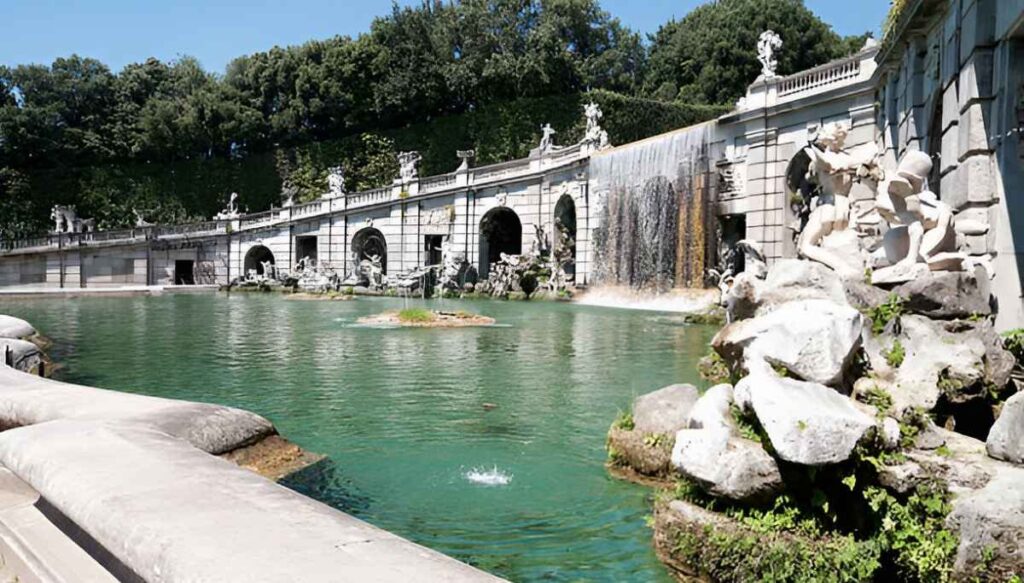
14. Marvel at the Water Palace
The Water Palace (Palacio de Aguas Corrientes) is an architectural wonder in Buenos Aires. This former water pumping station now houses a museum dedicated to the city’s water and sanitation history.
Notable features:
- Over 300,000 colorful terracotta tiles on the facade
- Intricate designs including the Argentine coat of arms
- A blend of various European architectural styles
While the exterior is the main attraction, the museum offers insight into the city’s infrastructure development.
Hidden Treasures in Almagro, Buenos Aires
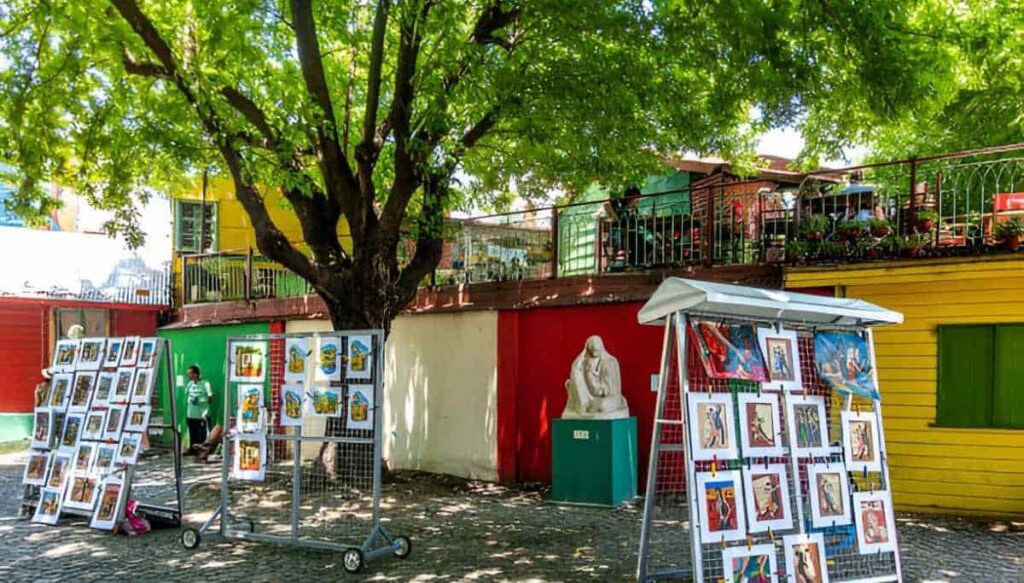
15. Explore Traditional Buenos Aires Art
In Almagro, visitors can see a unique form of local art called fileteado porteno. This decorative style adorns signs, shop windows, and vehicles throughout the city. UNESCO recognized it as Cultural Heritage in 2015.
On Jean Jaures Street, entire houses are covered in this eye-catching art. The city government backed this project to keep the tradition alive. It’s a great spot for photos and learning about local culture.
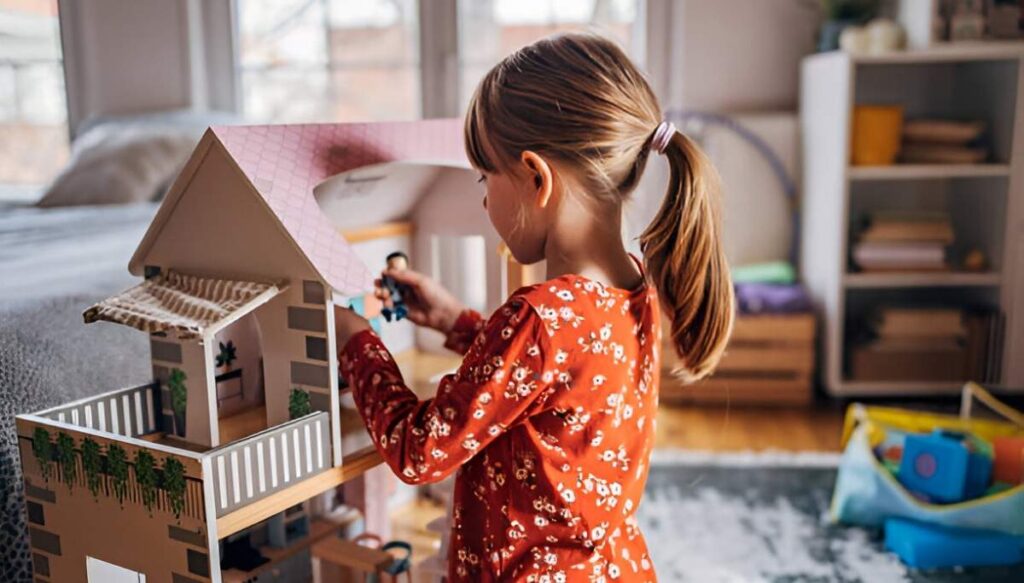
16. Carlos Gardel’s Childhood Home
Almagro holds a special place in tango history. The neighborhood is home to a museum dedicated to Carlos Gardel, a famous tango singer. Visitors can tour his childhood home and learn about his life and music.
Near the museum, there’s a street named after Gardel. It features old-style bars and tango-inspired street art. The museum offers free entry on Wednesdays, making it a budget-friendly option.
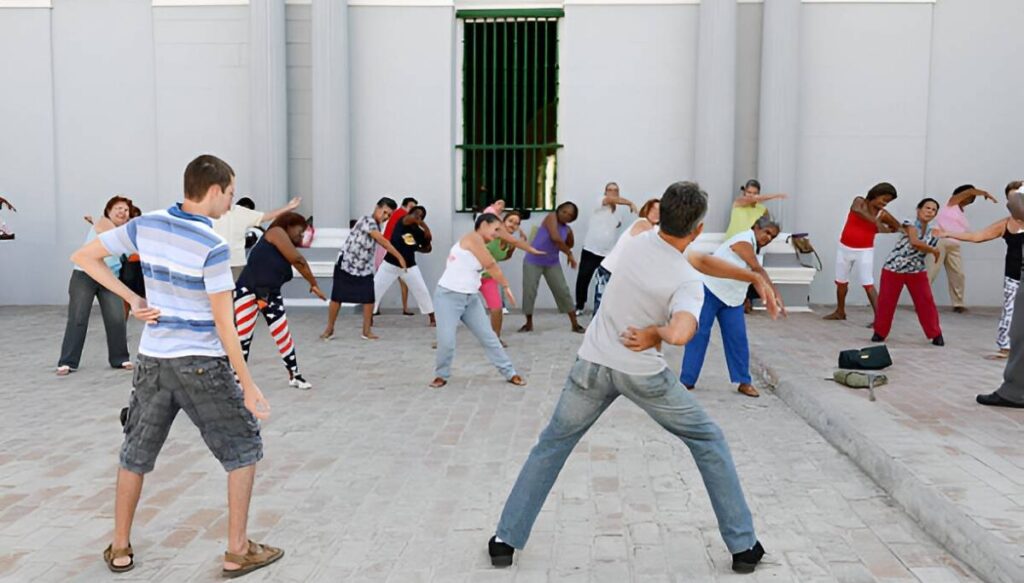
17. Dance Tango at a Local Milonga
For a real tango experience, Almagro is the place to be. The neighborhood is known for its milongas – local tango dance halls. These spots offer a more authentic feel than tourist-heavy areas.
La Catedral on Sarmiento Street is a popular milonga. They offer beginner lessons early in the evening. It’s a great chance for visitors to try out their tango skills in a welcoming setting.
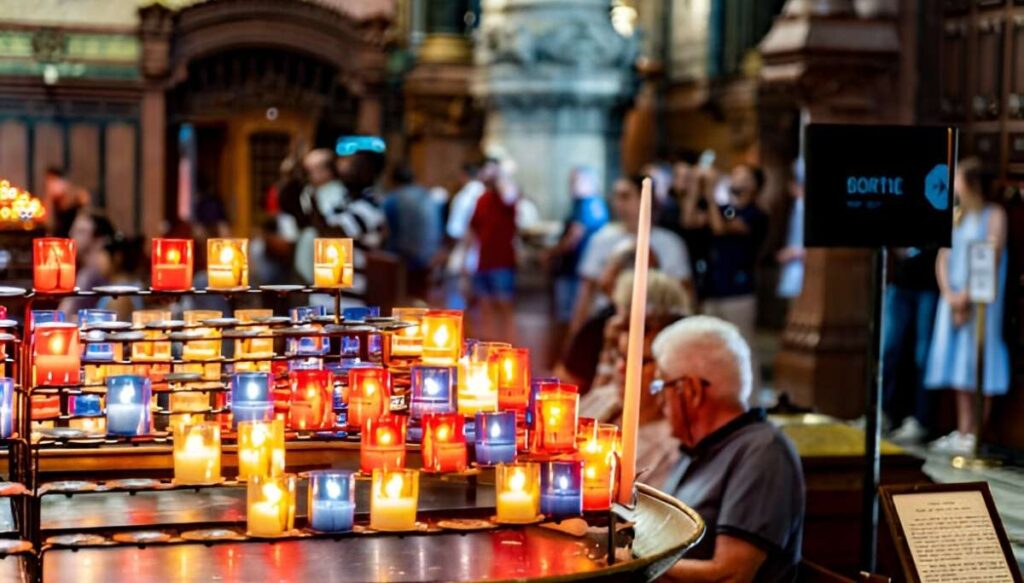
18. Visit the Colourful Basilica
The Basílica de Maria Auxiliadora y San Carlos is a hidden gem in Almagro. This church stands out with its candy-striped columns and blue ceiling. The detailed decorations inside are worth a close look.
Many tourists miss this spot, so it’s perfect for those who want to avoid crowds. It’s a peaceful place to admire unique architecture and take a break from the busy city.
Hidden Treasures in Belgrano, Buenos Aires
19. A Tranquil Oasis: The Museum Larreta Gardens
In the heart of Belgrano, a beautiful Spanish garden awaits visitors at the Museum of Spanish Art. This quiet spot gives visitors a chance to relax away from the busy city.. The garden, once part of a private home, now welcomes the public.
While the museum focuses on Spanish art, the garden steals the show. Visitors can enjoy its beauty for a small fee. For those who prefer, the on-site café provides a glimpse of the garden’s charm.
The museum opens:
- Weekdays: 1 PM to 7 PM
- Weekends and holidays: 10 AM to 8 PM
Address: Avenida Juramento 2291, Belgrano
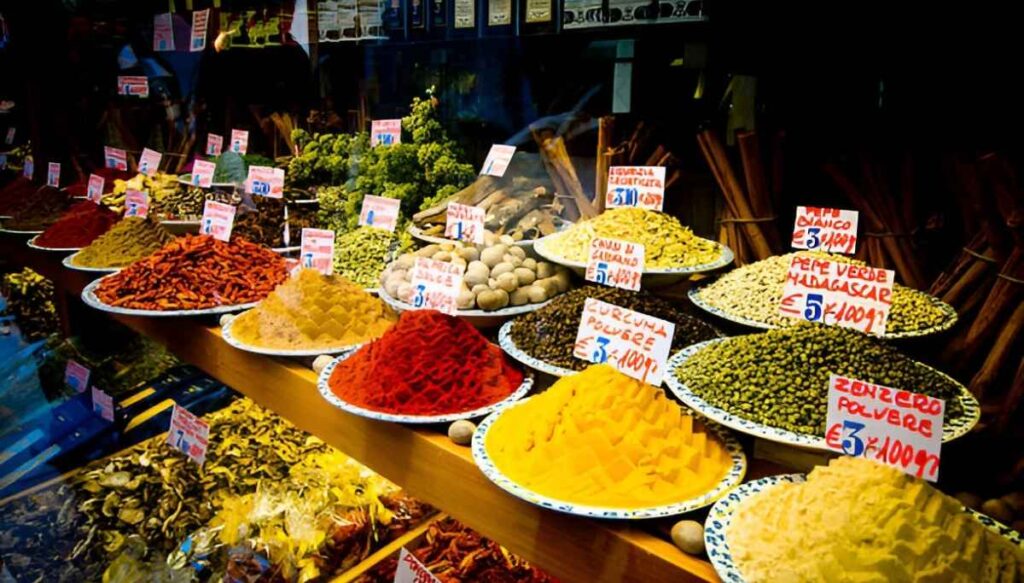
20. Eastern Flavours: Belgrano’s Chinatown
Near Belgrano C train station lies Buenos Aires’ vibrant Chinatown. Though small, this area packs a punch with its Asian markets, eateries, and bars.
A large arch marks the entrance at Juramento and Arribenos streets. This gift from China welcomes visitors to a neighborhood largely populated by Taiwanese immigrants.
Chinatown offers a taste of Asia in Argentina’s capital. It’s a perfect spot for those seeking unique experiences off the beaten path.
Address: Avenida Juramento and Arribenos
21. Dance Under the Stars: Tango at Barrancas de Belgrano
Barrancas de Belgrano Park comes alive with the rhythm of tango. This green space hosts outdoor dance lessons, adding a local touch to Buenos Aires nights.
Tango enthusiasts gather at La Glorieta de Belgrano, a small stage in the park. Classes run:
- Monday to Friday: 7:30 PM
- Saturday and Sunday: 4:30 PM and 7:30 PM
The park itself, designed in 1892, boasts over 60 plant species. Its layout comes from French designer Carlos Thays, known for other Buenos Aires green spaces.
Address: Echeverría 1800, Belgrano
These hidden gems showcase Belgrano’s charm. From serene gardens to cultural hubs and dance spots, this neighborhood offers unique experiences for curious travelers.
Off-the-Beaten-Path Treasures in Villa Crespo and Colegiales
22. Explore the Grand Chacarita Cemetery
Chacarita Cemetery stands as a remarkable yet often overlooked attraction in Buenos Aires. This vast burial ground offers visitors a chance to wander through Argentina’s past. Notable figures from politics, arts, and music rest here, including the famous tango singer Carlos Gardel.
The cemetery’s impressive size and architectural diversity make it a fascinating place to explore. Visitors can admire:
- Massive mausoleums
- Intricate sculptures
- Unique grave designs
Established in the late 1800s, Chacarita Cemetery provides a glimpse into Argentina’s rich history. Its location in Villa Crespo makes it easy to visit while exploring this up-and-coming neighborhood.
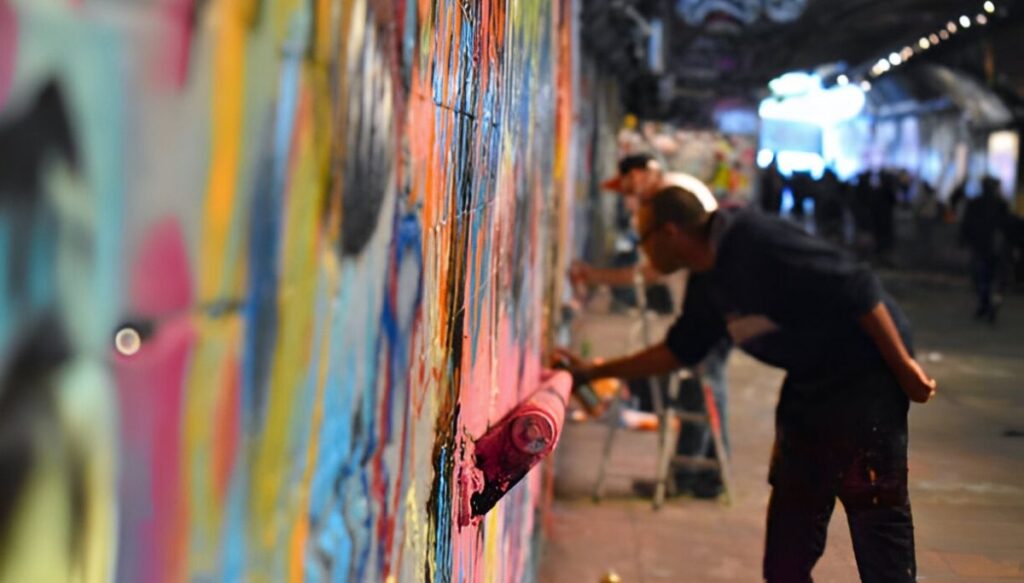
23. Uncover Colorful Street Art in Colegiales
Street Art in Colegiales
Colegiales might seem like a quiet residential area, but it hides a vibrant secret. The neighborhood’s walls serve as canvases for talented artists, creating an outdoor gallery of stunning murals.
Art enthusiasts will find:
- Large-scale paintings
- Thought-provoking pieces
- A mix of styles and themes
Despite its residential nature, Colegiales boasts some of the city’s most impressive street art. This hidden gem in Buenos Aires is perfect for those who want to see a different side of the city’s creativity.
Visitors staying in nearby Palermo should take a short trip to Colegiales. The neighborhood’s street art offers a unique perspective on local culture and artistic expression.
Unique Spots in Villa Urquiza, Buenos Aires
24. Sip Drinks at the Up-and-Coming DoHo Area
Villa Urquiza has a hidden gem called DoHo, short for Donado and Holmberg streets. This area has become a trendy spot for food and drinks. DoHo’s look is different from other parts of Buenos Aires. It has newer buildings and a fresh feel.
The story of DoHo is interesting. In the 1970s, it was meant to be part of a big road project. But that plan fell through. For years, the area was left empty. In 2009, the city decided to fix it up. Now, it’s a cool place to hang out.
Here are some great spots to check out in DoHo:
- Gallo Negro Cervecaria: A popular outdoor beer bar
- Cafe Urbano: A stylish coffee shop with yummy cakes
- El Bohemio: A cute restaurant with healthy food options
- Cigalo Specialty Coffee: A modern cafe that welcomes dogs
DoHo is also a good place to stay for longer trips. It’s easy to get around with buses and subways nearby. The area is more relaxed than busy parts of town like Palermo.
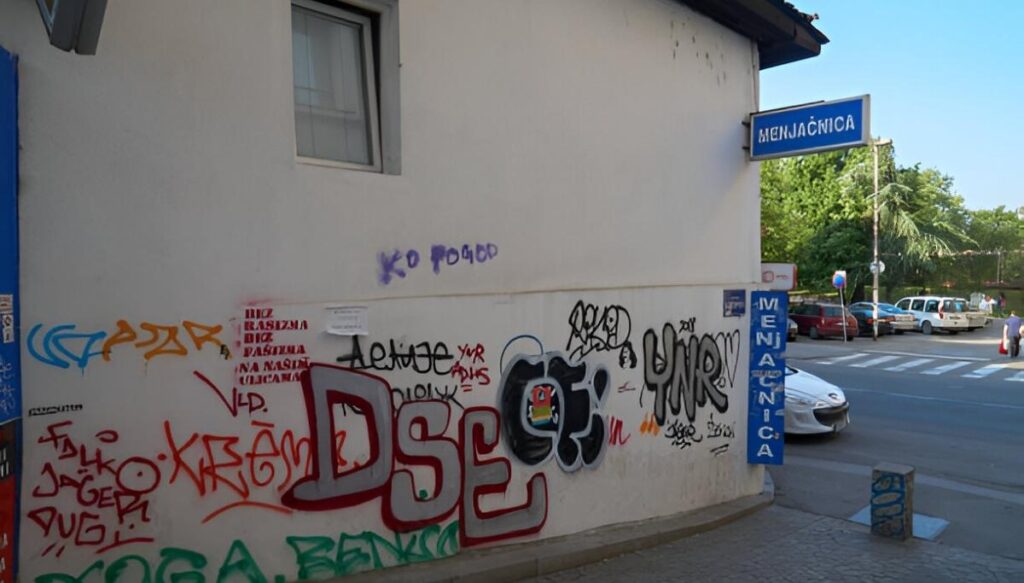
25. Street Art Discovery in Coghlan and Villa Urquiza
Coghlan and Villa Urquiza have some amazing street art that many people don’t know about. These areas have big, colorful murals painted by local and international artists.
Visitors can join walking tours led by Buenos Aires Street Art. These tours share stories about the artwork and show hidden spots. But it’s also safe to explore on your own if you prefer.
After looking at street art, people often head to DoHo for food or coffee. It’s a nice way to end the day in this part of Buenos Aires.
Both these areas show a different side of the city. They’re less crowded than tourist spots but just as interesting. Visitors who want to see the real Buenos Aires should check out Villa Urquiza and its neighbor Coghlan.
The mix of new food spots in DoHo and street art in both areas makes for a fun day out. It’s a chance to see how the city is changing and growing. These neighborhoods prove there’s always something new to find in Buenos Aires, even in less famous parts of town.
Unique Places on the Outskirts of Buenos Aires
26. Wine Tasting at Gamboa Winery
In the Campana region, about 65 km from Buenos Aires city center, lies the Gamboa Winery, a small local gem. This unique vineyard offers a taste of Argentine wine without the long trip to Mendoza.
Visitors can enjoy:
- A brief tour of the winery
- Insight into their wine production process
- A delicious lunch paired with exclusive wines
Despite challenging terrain, the owners have created a thriving hobby vineyard. While their own wine may be limited, they partner with other Argentine vineyards to ensure guests can still enjoy quality wines with their meals.
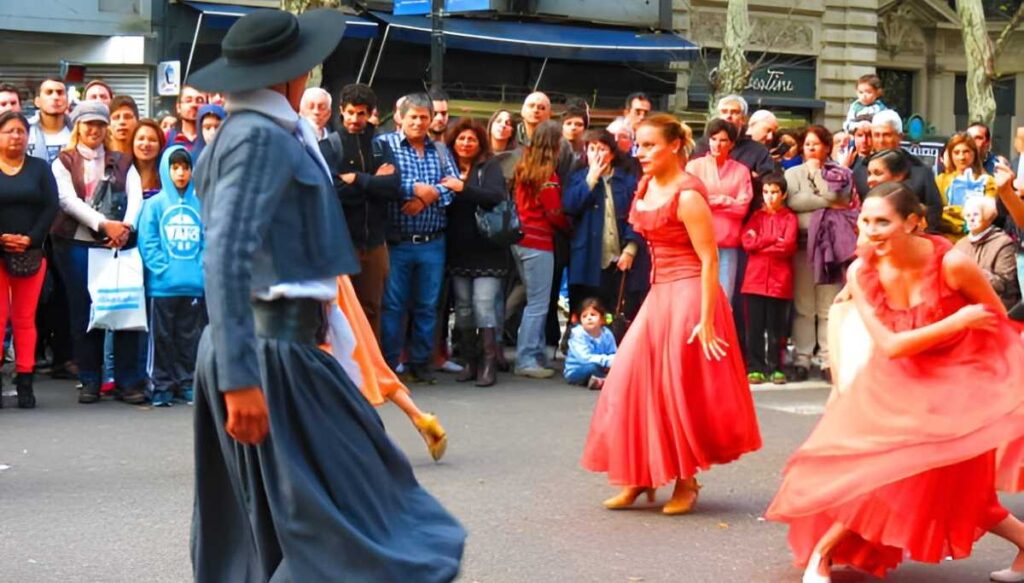
27. Argentine Folk Dance at Mataderos Market
The Mataderos Market offers a genuine glimpse into Argentine culture. Every Sunday from April to December, this market comes alive with:
- Gaucho culture displays
- Traditional folk dancing
- Stalls selling leather goods and decorated knives
- A wide variety of mate cups
Located in the Mataderos neighborhood, the market is about 30-45 minutes by car from central areas. Public transport options are available, with bus rides taking around an hour from the city center or Palermo.

28. Cycling to Memory Park
For a mix of history and outdoor activity, consider biking to Memory Park. This public space along the Rio de La Plata pays tribute to victims of Argentina’s military dictatorship.
Key features include:
- Artwork and sculptures depicting Argentina’s past
- A memorial wall with names of victims
- Scenic waterfront views
To get there, rent a bike and follow the Costanera Norte path past Aeroparque Jorge Newberry. It’s a unique way to explore a less-visited part of the city while learning about its complex history.
29. Day Trip to San Isidro
San Isidro, a charming town north of Buenos Aires, makes for an excellent day trip. Founded in 1784, it boasts:
- A historic quarter with old mansions and hidden gardens
- The neo-gothic Cathedral of San Isidro
- Pueyrredon Museum, showcasing traditional Argentine ranches
- Villa Ocampo, an impressive mansion once owned by writer Victoria Ocampo
Easily accessible by train from Buenos Aires, San Isidro offers a different pace and atmosphere from the bustling capital.
30. Exploring La Plata
La Plata, the capital of Buenos Aires province, lies about 60 km from the city. This often-overlooked destination has much to offer:This quiet spot gives visitors a chance to relax away from the busy city.
- La Plata Cathedral: Argentina’s largest neo-Gothic Catholic cathedral
- Casa Curutchet: The only South American house designed by Le Corbusier, a UNESCO World Heritage site
- La Plata Museum: A natural history museum with impressive collections
| Exhibit | Description |
| Fossils | Ancient remains of prehistoric life |
| Mummies | Preserved human remains |
| Dinosaurs | Reconstructed prehistoric reptiles |
The museum spans two floors with 23 rooms, offering a comprehensive look at natural history.
To reach La Plata, take the Roca regional train from Plaza Constitucion station in Buenos Aires. It’s an easy day trip that provides a different perspective on Argentine culture and history.
3 Day Buenos Aires Adventure
Day 1 – Explore Historic City Center
Start your Buenos Aires journey in the Montserrat neighborhood. Visit the unique Palacio Barolo with its Divine Comedy-inspired design. Stroll down Avenida de Mayo to Cafe Tortoni for a coffee break.
Head to Plaza de Mayo, Argentina’s main square. Tour Casa Rosada, the pink presidential palace. Take the subway to La Boca for colorful streets and a lively atmosphere. End your day in Puerto Madero with riverside drinks at sunset.
Day 2 – Tigre Delta Excursion
Take a train from Retiro station to Tigre, about an hour away. Choose between the fast Linea Metro or scenic Tren de la Costa.
In Tigre, enjoy a boat tour of the delta’s waterways. Relax at a riverside cafe and browse antique shops. Back in Buenos Aires, watch an evening tango show. Try a dance class if you’re feeling bold!
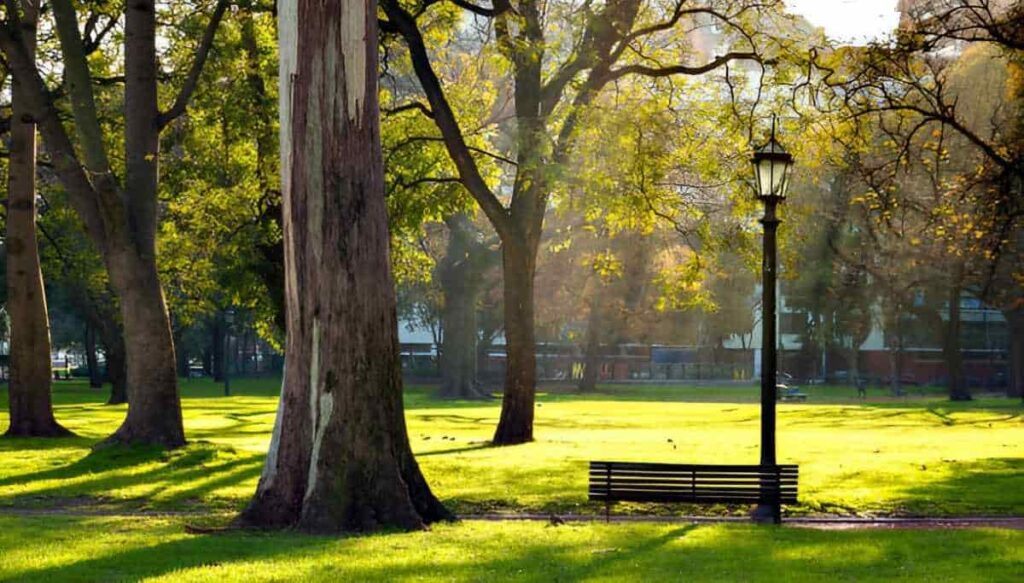
Day 3 – Palermo Art and Gardens
Start at Recoleta Cemetery to see Eva Peron’s tomb. Take bus 67 to the MALBA art museum.
Join a guided street art tour in Palermo. Learn about the colorful murals’ meanings. Relax afterward in Jardin Japones or Paseo El Rosedal rose garden.
Finish with dinner at a traditional Argentinian restaurant in Palermo.
Travel Insurance Tips
Don’t forget travel insurance for your trip. Look for policies that offer:
- Flexible coverage periods
- No itinerary requirements
- Medical and emergency evacuation coverage
- Lost luggage protection
Look different choices to find what works best for you and your money. Having insurance gives you peace of mind so you can fully enjoy Buenos Aires.
Frequently Asked Questions
Buenos Aires offers many unique experiences for visitors. From hidden local spots to adventurous activities, there’s something for every traveller. Here are answers to common questions about exploring Argentina’s capital city.
What are the top non-touristy activities to experience in Buenos Aires?
colourfulVisitors can explore the vibrant street art scene in Palermo. Local artists create colorful murals throughout this neighborhood. Another off-the-beaten-path activity is browsing the Sunday market in San Telmo. Here, travellers can find unique antiques and handmade crafts.
What adventurous activities can one find in Buenos Aires?
Bike tours offer an exciting way to see the city. Cyclists can pedal through different neighbourhoods and parks. For water enthusiasts, a day trip to nearby Tigre provides opportunities for kayaking and boating on the river delta.
Can you list some unique, free activities to do in Buenos Aires?
Many parks in Buenos Aires are free to visit. The Ecological Reserve offers nature walks and birdwatching. Visitors can also enjoy free dance shows in public squares. The El Ateneo Grand Splendid bookshop allows guests to browse its stunning converted theatre at no cost.
What are the must-visit spots for a short three-day trip to Buenos Aires?
A three-day itinerary should include the colourful La Boca neighbourhood and its famous Caminito Street. The historic Plaza de Mayo and surrounding government buildings are essential stops. Visitors should also experience a traditional Argentine steakhouse and catch a tango show.
What are the recommended activities in Buenos Aires for September?
September in Buenos Aires offers pleasant spring weather. This is a great time for outdoor activities like picnicking in Palermo Woods or visiting the Japanese Gardens. Cultural events often increase as the weather warms, with more outdoor concerts and festivals taking place.
What safety precautions should visitors take when exploring Buenos Aires?
Travellers should stay aware of their surroundings, especially in crowded areas. It’s wise to keep valuables secure and use official taxis or ride-sharing services. Visitors should avoid flashing expensive items and be cautious when using ATMs. Staying in well-lit areas at night is recommended.

